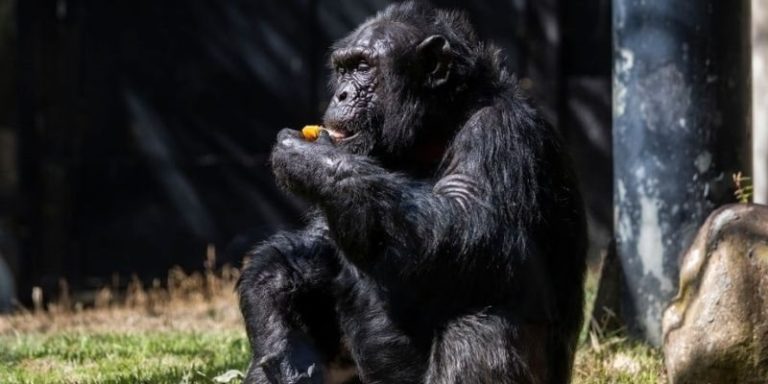Study Finds That Apes Have Manners, Too
Chimpanzees show us the primal importance of good manners.
By: Sarah Cowgill | August 19, 2021 | 468 Words

(Photo By Alejandro Martinez Velez/Europa Press via Getty Images)
Just like humans, apes use manners in social situations and signal to one another niceties like “hello” and “goodbye.” Ape social manners had not been seriously studied and recorded until now. A new scientific study has found that, like humans, apes use many non-verbal signs – for instance, a wave, a nod or a touch when greeting, and turning their bodies away from another when the interaction is complete.
Researchers watched 1,242 chimpanzees and bonobos (pygmy chimps) in zoos to see if the actions were a common language shared by the primate kingdom. They discovered that bonobos were much more polite than chimpanzees. Bonobos signaled “hi” and made eye contact before playing almost all of the time. A third of the time, chimps jumped right in without a “hey, can I play a game with you?” Gesturing for “see ya later” was often used by both species when stopping play.
One scientist notes the discovery flips upside-down the long-held notion that only humans share intentions, social norms, and develop a mutual sense of duty toward one another. Researcher Dr. Raphaela Heesen also noted that the apes acted like humans when meeting up. If the ape was hanging out with a good pal, there was less introduction in play. But when meeting a new ape, there was much more signaling in the “getting to know you” stage. As Heesen said: “When you’re interacting with a good friend, you’re less likely to put in a lot of effort in communicating politely.”
Apes share almost all their DNA with humans, and these findings suggest a common ancestor of apes and humans practiced manners far back in history. There are many similarities that humans and apes share today:
- Shaking our heads to say “no.”
- Laughing out loud
- Holding hands
- Hugging
- Eating junk food for comfort
- Girl bonobos play with traditional girl toys, and boys play with traditional boy toys
- And they play with fairness, like obeying the rules of a game

Bonobo chimps
Dr. Heesen also says she plans to study other species to see what social actions they use. The work, Heesen explains, is quite valuable to human society: “You can’t dig up bones to look at how behavior has evolved. But you can study our closest living relatives: great apes like chimpanzees and bonobos. So whether this type of communication is present in other species will also be interesting to study in the future.”
So, the next time you leave your friend’s house, say “thank you” and “goodbye.” If the apes cast a judging eye against their own community, you can bet they’d agree if your friend called you “rude.” If it’s the law of the jungle, then it may be the law in your neighborhood.
















